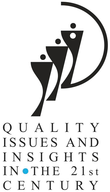| Abstract | Chronic renal failure (CRF) is one of the serious medical disorders and is associated with increase in poor physical and mental health leading to impaired quality of life (QOL). The Kidney Disease Quality of Life Questionnaire–Short Form (KDQOL-SFTM) is widely being used as a measure of QOL in CRF patients and very few studies have investigated the QOL in CRF patients not undergoing dialysis. The aim of the present study was to determine the reliability and validity of KDQOL-SFTM in CRF patients on haemo-dialysis (CRF-D) and not on dialysis (CRF-ND) in Bangalore, India.
Data was gathered from 101 participants from the nephrology department of age >18 years having CRF. The patients who had undergone renal transplant were excluded in this study. KDQOL-SFTM 1.3 composed of 43 kidney-specific items and 36 general health items was used, excluding three questions relating to dialysis staff encouragement and patient satisfaction, sexual function as they were not relevant to our study population comprising of CRF patients on dialysis and not on dialysis. Percentage of floor, percentage of ceiling, and internal consistency reliability (Cronbach’s alpha coefficient) were calculated. Complete information was collected from 101 participants with 40 CRF patients undergoing dialysis and 61 CRF patients not on dialysis with the mean age of 50.88 ±14.22 years (CRF-D) and 53.64 ± 13.03 years (CRF-ND). Comparison of KDQOL-SFTM mean score values between CRF patients on dialysis and not on dialysis group revealed that quality of social interaction, role emotional, emotional well-being had a significant difference (p < 0.05), but the overall health score was almost same. All sub-scales had a Cronbach’s α above the recommended minimum value of 0.7 to indicate good reliability (range 0.7) except quality of social interaction (CRF-D and CRF-ND) and sleep, role physical and emotional well being in CRF-D group. Comparison of mean score values revealed that participants < 40 years had a better QOL the > 40 years.
Results from KDQOL-SFTM supported the validity and reliability of KDQOL as a measure of QOL in dialysis and not on dialysis patients in a tertiary care hospital in Bangalore, South Indian Population. Hence, measuring and monitoring these aspects of quality of life could lead to a more patient-centered care and improve the health and well-being among patients with CRF.
|
